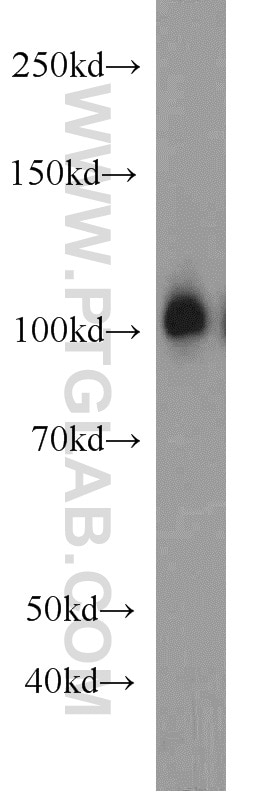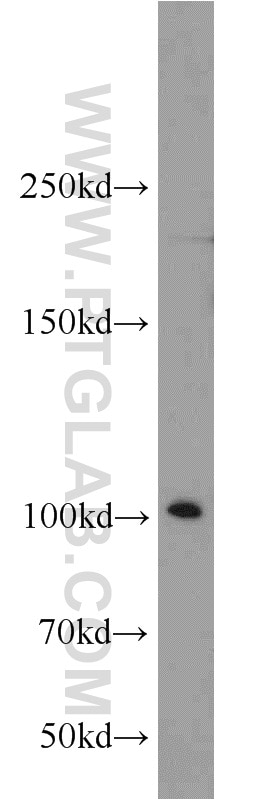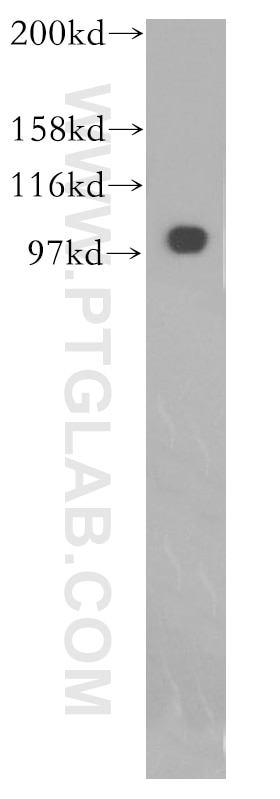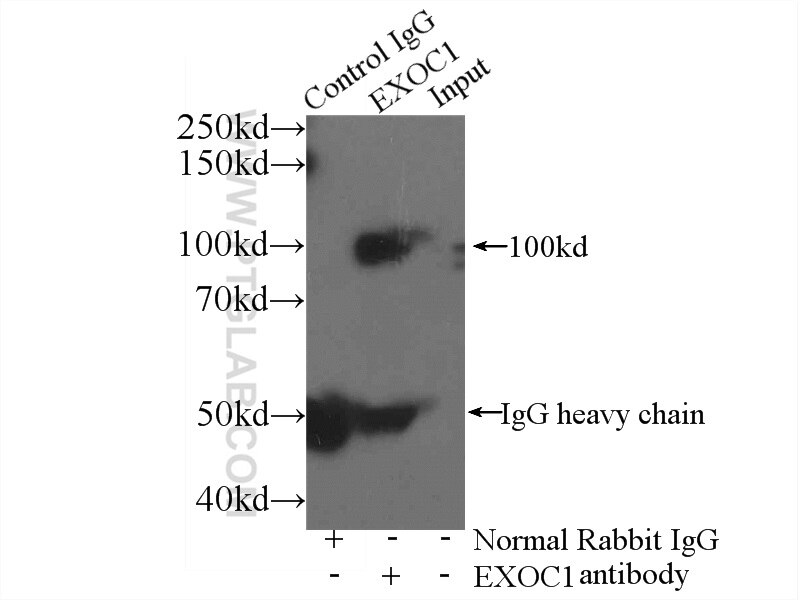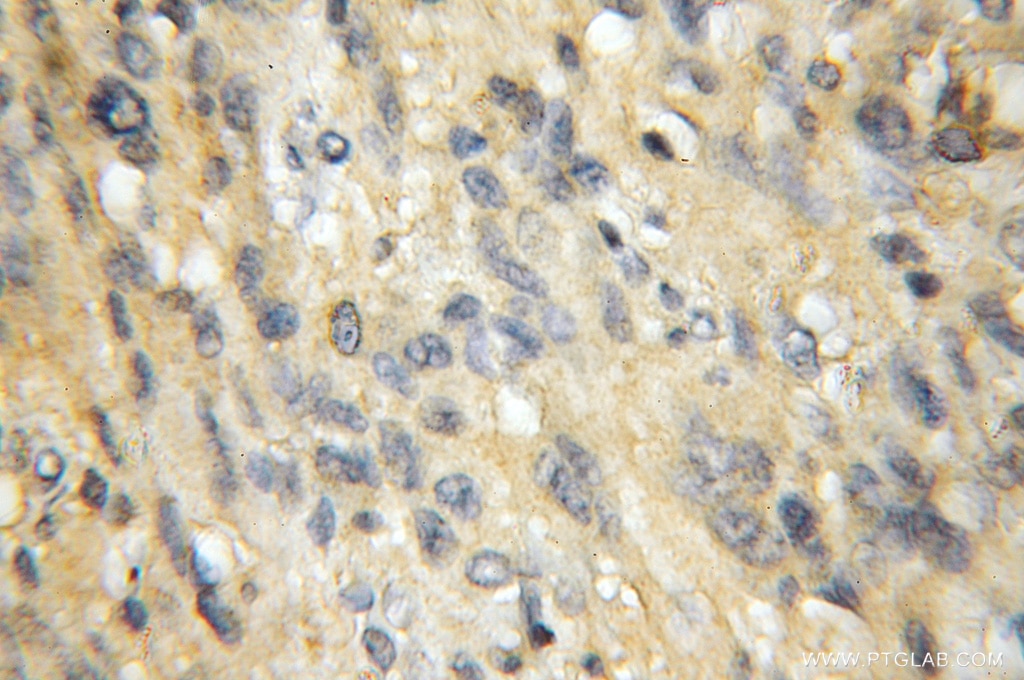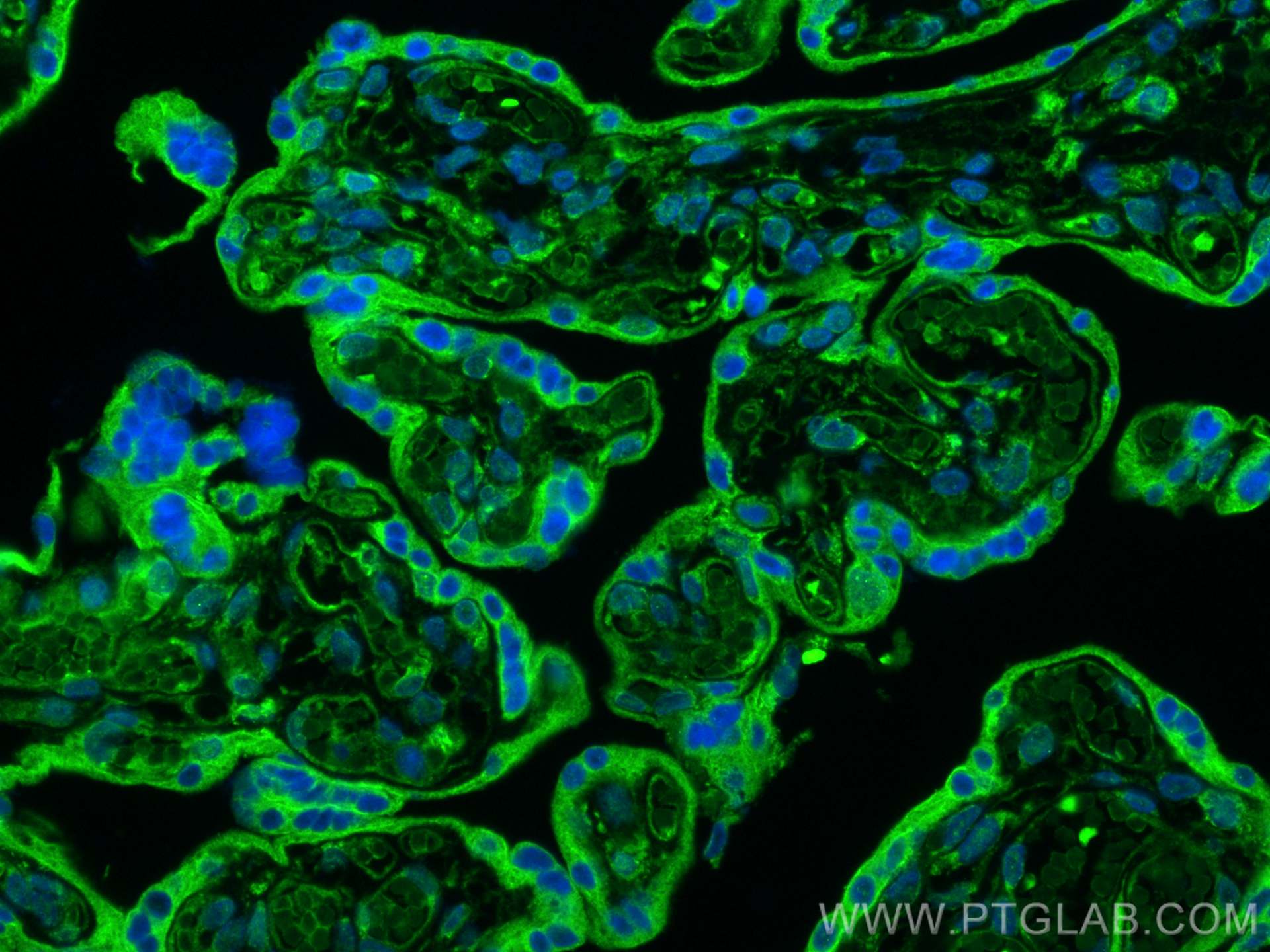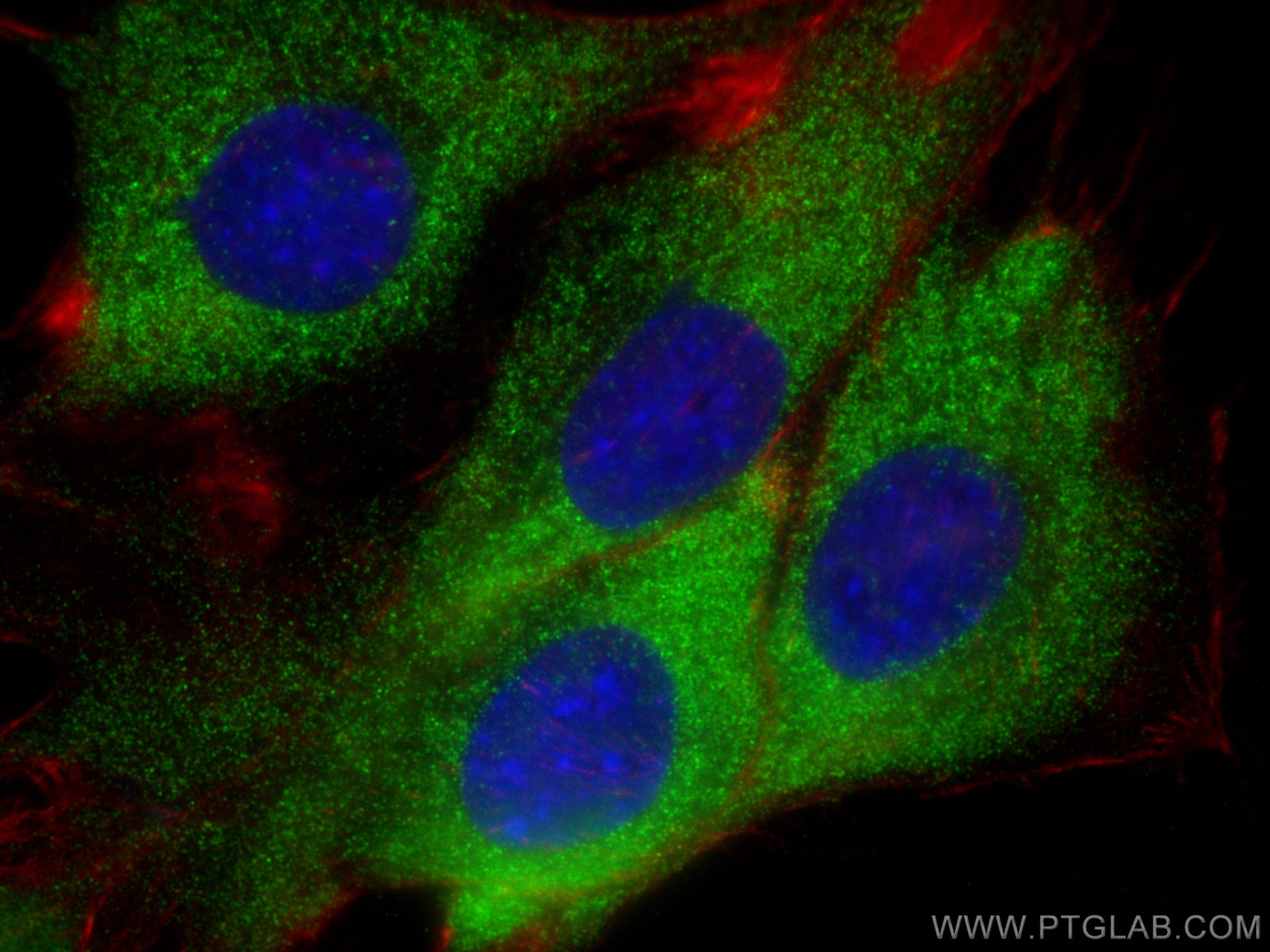- Featured Product
- KD/KO Validated
EXOC1 Polyklonaler Antikörper
EXOC1 Polyklonal Antikörper für WB, IHC, IF/ICC, IF-P, IP, ELISA
Wirt / Isotyp
Kaninchen / IgG
Getestete Reaktivität
human, Maus, Ratte
Anwendung
WB, IHC, IF/ICC, IF-P, IP, ELISA
Konjugation
Unkonjugiert
Kat-Nr. : 11690-1-AP
Synonyme
Galerie der Validierungsdaten
Geprüfte Anwendungen
| Erfolgreiche Detektion in WB | Rattenhirngewebe, humanes Hirngewebe, Maushirngewebe |
| Erfolgreiche IP | Maushirngewebe |
| Erfolgreiche Detektion in IHC | humanes Gliomgewebe Hinweis: Antigendemaskierung mit TE-Puffer pH 9,0 empfohlen. (*) Wahlweise kann die Antigendemaskierung auch mit Citratpuffer pH 6,0 erfolgen. |
| Erfolgreiche Detektion in IF-P | humanes Plazenta-Gewebe |
| Erfolgreiche Detektion in IF/ICC | C2C12-Zellen |
Empfohlene Verdünnung
| Anwendung | Verdünnung |
|---|---|
| Western Blot (WB) | WB : 1:500-1:2000 |
| Immunpräzipitation (IP) | IP : 0.5-4.0 ug for 1.0-3.0 mg of total protein lysate |
| Immunhistochemie (IHC) | IHC : 1:20-1:200 |
| Immunfluoreszenz (IF)-P | IF-P : 1:50-1:500 |
| Immunfluoreszenz (IF)/ICC | IF/ICC : 1:200-1:800 |
| It is recommended that this reagent should be titrated in each testing system to obtain optimal results. | |
| Sample-dependent, check data in validation data gallery | |
Veröffentlichte Anwendungen
| KD/KO | See 3 publications below |
| WB | See 10 publications below |
| IF | See 9 publications below |
| IP | See 1 publications below |
Produktinformation
11690-1-AP bindet in WB, IHC, IF/ICC, IF-P, IP, ELISA EXOC1 und zeigt Reaktivität mit human, Maus, Ratten
| Getestete Reaktivität | human, Maus, Ratte |
| In Publikationen genannte Reaktivität | human, Maus, Ratte |
| Wirt / Isotyp | Kaninchen / IgG |
| Klonalität | Polyklonal |
| Typ | Antikörper |
| Immunogen | EXOC1 fusion protein Ag2303 |
| Vollständiger Name | exocyst complex component 1 |
| Berechnetes Molekulargewicht | 894 aa, 102 kDa |
| Beobachtetes Molekulargewicht | 102 kDa |
| GenBank-Zugangsnummer | BC020650 |
| Gene symbol | EXOC1 |
| Gene ID (NCBI) | 55763 |
| Konjugation | Unkonjugiert |
| Form | Liquid |
| Reinigungsmethode | Antigen-Affinitätsreinigung |
| Lagerungspuffer | PBS mit 0.02% Natriumazid und 50% Glycerin pH 7.3. |
| Lagerungsbedingungen | Bei -20°C lagern. Nach dem Versand ein Jahr lang stabil Aliquotieren ist bei -20oC Lagerung nicht notwendig. 20ul Größen enthalten 0,1% BSA. |
Hintergrundinformationen
EXOC1 (exocyst complex component 1), also known as SEC3, is a component of the exocyst complex which is essential for the targeting of exocytic vesicles to specific docking sites on the plasma membrane. The exocyst complex is an octameric complex that tethers vesicles at the plasma membrane, regulates polarized exocytosis, and recruits membranes and proteins required for nanotube formation.Recently it has been reported that exocyst complex proteins are likely a key effector of Nef-mediated enhancement of nanotube formation, and possibly microvesicle secretion, which suggests a new paradigm of exocyst involvement in polarized targeting for intercellular transfer of viral proteins and viruses.
Protokolle
| Produktspezifische Protokolle | |
|---|---|
| WB protocol for EXOC1 antibody 11690-1-AP | Protokoll herunterladen |
| IHC protocol for EXOC1 antibody 11690-1-AP | Protokoll herunterladen |
| IF protocol for EXOC1 antibody 11690-1-AP | Protokoll herunterladen |
| IP protocol for EXOC1 antibody 11690-1-AP | Protokoll herunterladen |
| Standard-Protokolle | |
|---|---|
| Klicken Sie hier, um unsere Standardprotokolle anzuzeigen |
Publikationen
| Species | Application | Title |
|---|---|---|
Nat Nanotechnol Intercellular nanotubes mediate mitochondrial trafficking between cancer and immune cells.
| ||
J Cell Biol The exocyst controls lysosome secretion and antigen extraction at the immune synapse of B cells. | ||
Elife EXOC1 plays an integral role in spermatogonia pseudopod elongation and spermatocyte stable syncytium formation in mice. | ||
PLoS Pathog Shigella hijacks the exocyst to cluster macropinosomes for efficient vacuolar escape. | ||
Retrovirology Proteomic analysis of HIV-1 Nef cellular binding partners reveals a role for exocyst complex proteins in mediating enhancement of intercellular nanotube formation. |
